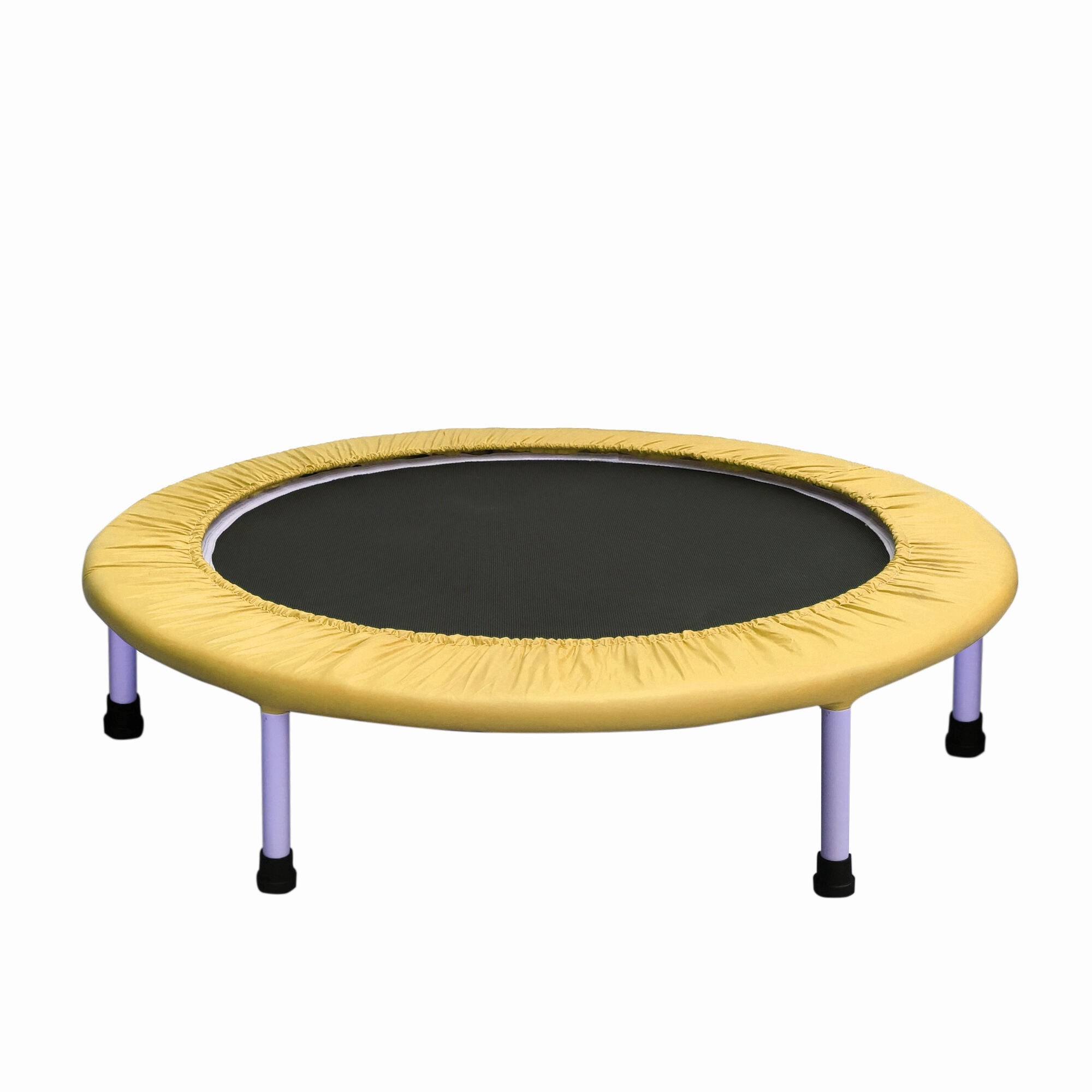Key Benefits of Mini Trampolines for Indoor Fitness
Low-Impact Cardiovascular Boost
Mini trampolines offer an excellent cardiovascular workout while reducing stress on the joints, making them suitable for individuals of all fitness levels. The elasticity of the trampoline surface provides a low-impact environment, which is particularly beneficial for beginners or those with joint concerns. Studies demonstrate that rebounding on a mini trampoline can burn up to 50% more calories compared to jogging, ensuring an effective calorie-burning session without the harsh impact on your knees and ankles. The rhythmic bouncing naturally increases heart rate, leading to improved stamina and endurance over time. Consequently, incorporating trampoline workouts into your routine can enhance cardiovascular fitness, promoting long-term heart health.
Enhanced Balance and Coordination
Regular use of mini trampolines significantly improves proprioception, thereby enhancing overall balance and coordination. The dynamic nature of bouncing requires consistent body stabilization, engaging core muscles and leading to better strength and flexibility. This balance exercise can be particularly beneficial for aging adults, as maintaining coordination skills is crucial to preventing falls and injuries. Athletic training often incorporates trampoline exercises to sharpen motor skills and facilitate quicker reflexes, making them popular in various sports disciplines. Overall, mini trampolines provide a practical yet enjoyable way to improve coordination training, ultimately promoting an active lifestyle.
Lymphatic System Stimulation
Jumping on a mini trampoline effectively stimulates the lymphatic system, promoting detoxification and overall better health. The repeated bouncing movements help in increasing the lymph flow, which can be up to 15 times higher, significantly benefiting the body's detoxifying processes. This stimulation can enhance immune function, playing a crucial role in disease prevention and overall wellness. Incorporating trampoline workouts into your routine nurtures immune health, providing an engaging approach towards maintaining your body's natural defense systems. Hence, trampoline exercises serve as an ideal fitness activity to support lymphatic drainage and detoxification, contributing to improved immune system function.
Essential Features to Look For in Mini Trampolines
Bungee vs. Spring Systems: Pros and Cons
When choosing a mini trampoline for fitness, understanding the differences between bungee and spring systems is essential to finding the right fit for your needs. Bungee systems offer a softer, quieter bounce that minimizes wear and tear on the trampoline, making them ideal for users who prioritize a gentle workout experience. Conversely, spring systems typically offer a firmer bounce, which might be more suited for those looking for a more intense rebounder trampoline workout. Each type has its pros and cons, and evaluating your personal preference and fitness goals will guide you towards the best choice. Whether you opt for the soft bounce of bungee fitness or the firm bounce provided by springs, both systems can offer excellent performance for an engaging workout session.
Weight Capacity and Frame Durability
It's crucial to assess the weight capacity of a mini trampoline to ensure safe usage during exercise, as overloading it can lead to accidents and equipment damage. Knowing the trampoline's capacity helps in making sure it's suitable for its users. A durable frame made from steel or reinforced materials can significantly prolong the trampoline's lifespan, making it a worthwhile investment. Additionally, looking for models with warranties or guarantees can serve as indicators of frame reliability and durability, assuring you that the trampoline will withstand your fitness routines over time. Prioritizing frame strength not only ensures safety but also enhances the longevity of your mini trampoline.
Non-Slip Surface and Safety Nets
Safety features are paramount when selecting a mini trampoline, with a non-slip surface playing a crucial role in preventing slips and falls during exercises. This feature is particularly important when executing high-intensity trampoline workouts, as it supports stability and balance. Additionally, safety nets or enclosures add an extra layer of protection, making them beneficial for beginners and children using the trampoline. These additions not only help prevent injuries but also boost the user's confidence, encouraging more vigorous and varied fitness routines. With enhanced safety and protection features, a mini trampoline becomes a reliable tool for maintaining safe and effective exercise sessions at home.
Top Exercises for Indoor Rebounding Workouts
Health Bounce Warm-Up Routine
The health bounce is a fundamental warm-up routine perfect for prepping muscles and joints before engaging in more intense rebounding exercises. This simple exercise involves gentle bouncing with your feet barely leaving the trampoline surface, which helps in promoting blood flow and ensuring muscle preparation without excessive strain. Typically, spending 5-10 minutes on this warm-up can effectively ready your body for a series of other trampoline exercises, ensuring a smoother transition into a vigorous workout session.
Calorie-Burning Jumping Jacks
Jumping jacks on a mini trampoline are a great way to amplify the calorie-burning power of this classic exercise. The trampoline's forgiving surface minimizes joint impact, making the workout more dynamic while still providing a full-body experience. Performing jumping jacks on a rebounder trampoline not only adds an element of fun but also promotes enhanced fat loss through high-energy intervals. You can aim for 10-minute jumping jack sessions, alternating with other exercises to maximize fat-burning effectiveness in your workout routine.
Core-Toning Twists and Tucks
Core-toning twists and tucks are excellent exercises to incorporate into your rebounding routine for effective engagement of the core muscles, improving both stability and strength. Twists utilize the bounce motion to work your oblique muscles and the lateral abdominal area, while tucks focus on the central core, helping to further tone the abdominal muscles and improve their definition and strength. Integrating these exercises into your workout not only maximizes core engagement but also ensures a fun and dynamic session, enriching the overall trampoline workout experience.
Safety Tips for Effective Trampoline Use
Proper Setup on Flat Surfaces
Ensuring your trampoline is set up on a flat, stable surface is crucial for safety and performance. Establishing a safe setup minimizes risks, such as uneven bounce and potential accidents. Regular inspection of the area is vital to identify hazards like uneven ground or obstructions, which could impede your workout. Additionally, maintaining a clear space around the trampoline enhances both safety and ease of use, allowing for a more enjoyable exercise session.
Gradual Progression for Beginners
For beginners, easing into trampoline exercises is key to preventing injuries and building confidence. Starting with low-intensity exercises and gradually increasing the complexity and duration is the recommended approach. I find it beneficial to create a structured schedule that allows for gradual progression without overwhelming the body. Listening to your body's signals and resting when necessary are fundamental steps to avoid strain and ensure a safe workout experience.
Maintenance Checks for Longevity
Regular maintenance checks are essential for prolonging the life of your trampoline and ensuring user safety. This involves inspecting the frame, surface, and bungee/spring system to detect any signs of wear and potential hazards. Adhering to manufacturer guidelines for care and maintenance is recommended to maintain optimal performance. Scheduled checks help prevent unexpected breaks, fostering a safe and reliable trampoline experience. Engaging in these practices supports not only the longevity of your equipment but also the quality of your workout outcomes.
Choosing Between Rebounders and Full-Sized Models
Space-Saving Advantages of Mini Trampolines
Mini trampolines, often referred to as rebounders or mini trampolines, offer a compact design that's perfect for tight spaces. They are ideal for urban settings where space is limited, and many models can be folded up for convenient storage. This portability enables you to incorporate workouts seamlessly into your routine without the need for a large exercise area. The ease of storage and transport makes mini trampolines appealing for individuals living in apartments or homes with limited room for exercise equipment. With their small size, mini trampolines allow for fitness on the go and are easy to set up virtually anywhere—from home gyms to office spaces—making them a versatile choice for maintaining an active lifestyle.
When to Consider a Bungee Fitness Model
For those seeking a trampoline that offers a gentler bounce and reduces stress on the joints, particularly useful for older adults or those recovering from injuries, bungee fitness models are an excellent choice. These types of trampolines use bungee cords instead of springs to provide a smoother and quieter bounce, promoting a joint-friendly exercise experience. Therapeutic and recovery exercises can particularly benefit from this design due to its softer recoil and lower impact, allowing you to engage in fitness routines without exacerbating joint issues. Bungee trampolines also present various workout possibilities, adapting to diverse fitness goals—whether that's light cardio, balance training, or muscle-strengthening exercises—offering a distinctive style compared to traditional spring models.

